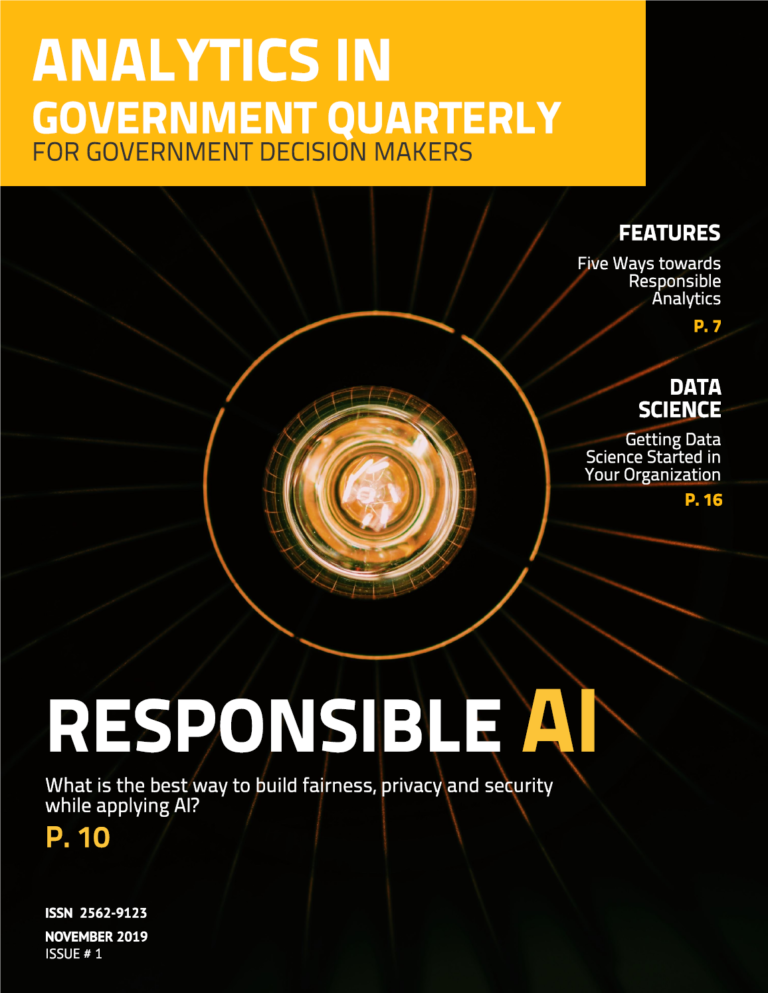COLUMNS
AI for Decision-Making in Public Administration
By Alex Ramirez, Ph.D.

In order to balance power and accountability, public administrators, engage in decision-making, analyze their policies, the inputs that have developed such policies and those needed to produce alternative ones. It is precisely in these two aspects, decision-making and analysis, that artificial intelligence can be an incredible resource. Working in the field of decision support systems for the last 20 years has allowed me to see the field evolve, from Decision Support Systems (DSS), Group Decision Support Systems (GDSS), Business Intelligence (BI), to Business Analytics (BA).
In all these solutions, the main driver of the changes has been technology, but it has been fueled by a constant environment of change. Organizations are under constant pressure to make better decisions. They have adopted technology to respond to or anticipate three main events: Problems, Opportunities, and Directives.
Problems
Among the many factors affecting organizations, some are considered problems. These need to be addressed and solved as soon as possible. A problem is recognized when the organization is unable to achieve their goals and objectives. In order to recognize the problem, the organization must have ways to measure their performance and compare it against their goals and objectives. Many do this through scorecards and different types of reports. This must be a daily activity to avoid surprises when it is, perhaps, too late. Some factors that generate problems are globalization, customer demands, market conditions, competition, etc.
Opportunities
Organizations that keep up to date on their environment, can observe or anticipate emerging trends that have not been explored, and they see these as opportunities. Not all these opportunities are worth pursuing, but in order to assess them, they need to have some data to measure their potential impact. Opportunities that are considered viable, must be pursued as soon as possible, before someone else sees them. In other words, the race to be the first to cash in on them is the fuel behind these events. Factors that give emergence to opportunities include new technologies, changes in market conditions, news about competitors’ struggles, trade wars, etc.
Directives
Every organization is accountable to their stakeholders and is regulated. Managers are free to act as long as they meet their board’s expectations, follow their regulations and do not break the laws. But sometimes, they need to accept changes in their operations when new regulations are put in effect. These directives force them to react in a way that will generate the least amount of disruption on their daily activities. Think for example what happened when the Harper government dropped the GST in July 2006 and then again in January 2008. All Canadian organizations of every size had to comply with these regulations and modify their systems accordingly.
What all these events, problems, opportunities and directives, have in common is that to understand them, organizations need data to measure and address them. Organizations can respond by: changing strategy, looking for ways to increase productivity, generating new business models, looking for collaborations, creating new products, or modifying their supply chains. Each and every one of these responses generate some options. These options must be evaluated. The best way to evaluate them is using a cost-benefit analysis (CBA). For each option, its costs must be quantified. This is an easy task since cost are always an upfront issue. A more difficult exercise is to quantify its benefits. Benefits are always a long-term issue and forecasting is not an easy task. Once data for both, costs and benefits are collected, managers can engage in CBA, and determine the impact of each option. Only then, they will be able to make decisions. Decision-making is only possible when there are viable alternatives and each alternative is properly assessed.
The amount of resources needed to engage in decision-making increases with any additional option considered. This is perhaps the reason most organizations have adopted computer systems to aid them in the decision-making process. If all the data needed for evaluating these options is available digitally, there are several tools that will shorten the time needed for their analyses, giving managers the opportunity to engage in What-If analyses, where they can anticipate the impact of each one of these options and have a better grasp on them.
What-if analysis helps managers understand how the solutions are impacted when an input variable is changed. If data is available and a tool is able to calculate the impact of the changes using a set of models that will answer immediately any of the questions posed by managers, what if instead of 10% reduction we negotiate a 12.5%? is it viable to produce 500 additional items? Do we have enough raw material? How fast can it be acquired?
Artificial Intelligence (AI) solutions now can be incorporated in the process of decision-making to help managers ask questions that previously have not been considered. These AI solutions can be added to the models used and help managers in the event of facing a problem, seizing an opportunity and/or following a directive.
Therefore, if public administrators want to respond to the constant environment of relentless change and still balance power and accountability, they ought to improve their decision-making processes. They can do so, by learning how to use AI models that will give them additional insight when analyzing their policies. These models also can help them identify what additional data can help in capturing the inputs used when developing new policies, and how the data can be used to justified to propose alternative ones.
At all levels of government, we need public administrators that are knowledgeable and proficient in the use of systems that can help them in their decision-making activities and that are able to use AI algorithms to their advantage to justify and become more accountable for the impact of their policies. The issue is no longer whether to use them, but how and how soon, either to solve problems, seize opportunities, or implement directives.
ABOUT THE AUTHOR

Alex Ramirez
Alex Ramirez, Ph.D. is an Associate Professor in Information Systems at the Sprott School of Business – Carleton University. He has worked in education for over 30 years. He obtained his Ph.D. from the Molson School of Business – Concordia University in Montreal, a master’s degree from Syracuse University in the U.S. and a BSc. High Honours from ITESM, Mexico’s top private university.

